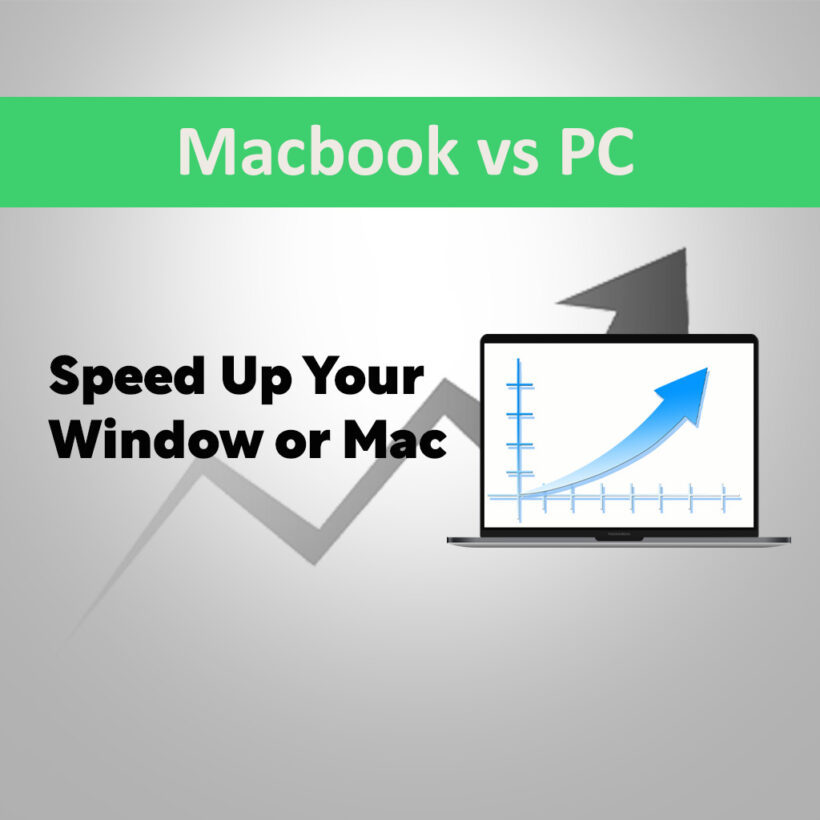In 2025, as operating systems become more powerful and software more demanding, even high-end PCs and Macs can start to slow down. Whether you use your machine for work, gaming, or school, a sluggish computer can be frustrating. In this blog, I will tell you how to boost operating system’s performance and speed. Now let’s get start
1. Disable Unnecessary Startup Programs
Windows
- Press Ctrl + Shift + Esc → Startup tab → Toggle off non-essential apps (e.g., cloud services, chat tools).
macOS:
- Navigate to System Settings > General > Login Items → Remove background apps like updaters or unused utilities.
2. Cleanup and Delete Junk Files
Windows:
- Run Disk Cleanup (search in Start menu) → Target system files, thumbnails, and update remnants.
- For deeper cleaning, try BleachBit (free) to wipe browser traces and logs.
Mac:
- Use Storage Management ( > About This Mac > Storage > Manage) → Enable “Auto Empty Trash” and delete iOS backups.
3. Maximize SSD Efficiency
Upgrade HDD -> SSD
- Windows/Mac: Install a PCIe 4.0+ SSD (e.g., Samsung 990 Pro) for 5x faster read speeds.
Enable TRIM:
- Open Command Prompt as admin → Run fsutil behavior set DisableDeleteNotify 0.
4. Keep Your Operating System Updated
2025 OS updates patch performance-killing bugs and security flaws.
- Windows: Settings > Windows Update → Toggle “Get updates automatically.”
- Mac: System Settings > General > Software Update → Enable automatic downloads.
5. Scan for Malware and Viruses
Cryptojacking malware and spyware drain resources silently.
- Windows: Microsoft Defender (built-in) + Malwarebytes (weekly scans).
- Mac: CleanMyMac X (real-time monitoring) or Norton 360 (AI threat detection).
Run full scans weekly or set them on an automatic schedule.
6. Optimize Background Processes and Services
Identify apps monopolizing CPU/RAM:
Windows:
- Windows: Ctrl + Shift + Esc → Processes tab → Sort by CPU/Memory → End non-critical tasks (e.g., updaters).
- Mac: Launch Activity Monitor (Utilities folder) → Quit processes >80% CPU usage.
7. Expand RAM for Heavy Workloads
Multitasking and creative apps demand ample memory:
- Windows: Upgrade to 16GB+ RAM if your device allows it (most desktops/older laptops).
- Mac Users: Apple Silicon Macs have soldered RAM—upgrade during purchase only.
8. Rebuild or Reset Your System
When slowdowns persist, refresh your system:
- Windows: Settings > System > Recovery → “Reset PC” → Keep files but reinstall OS.
- Mac: Reboot → Hold Cmd + R → Disk Utility → Erase volume → Reinstall macOS.
9. Simplify Visual Effects
Fancy animations tax older GPUs. Streamline your UI:
- Windows: Settings > System > Display > Advanced graphics → Disable transparency and animation effects.
- Mac: System Settings > Accessibility > Display → Enable “Reduce motion” and “Reduce transparency.”
10. Use Performance Monitoring Tools
Catch issues early with diagnostic tools:
- Windows: Use Task Manager > Performance tab or HWInfo for real-time stats.
- Mac: Reboot → Hold Cmd + R → Disk Utility → Erase volume → Reinstall macOS.
Thoughts:
Squeezing more life and speed out of your Windows or Mac in 2025 isn’t about being a technological wizard or purchasing an upgrade. By performing upkeep regularly, being a savvy software selector, and applying optimization strategies, you can keep your computer running longer and feel a marked improvement in performance. Make some of these adjustments today and you should see results right away.
Got a go-to speed-up tip that helped you? Let us know in the comments!


